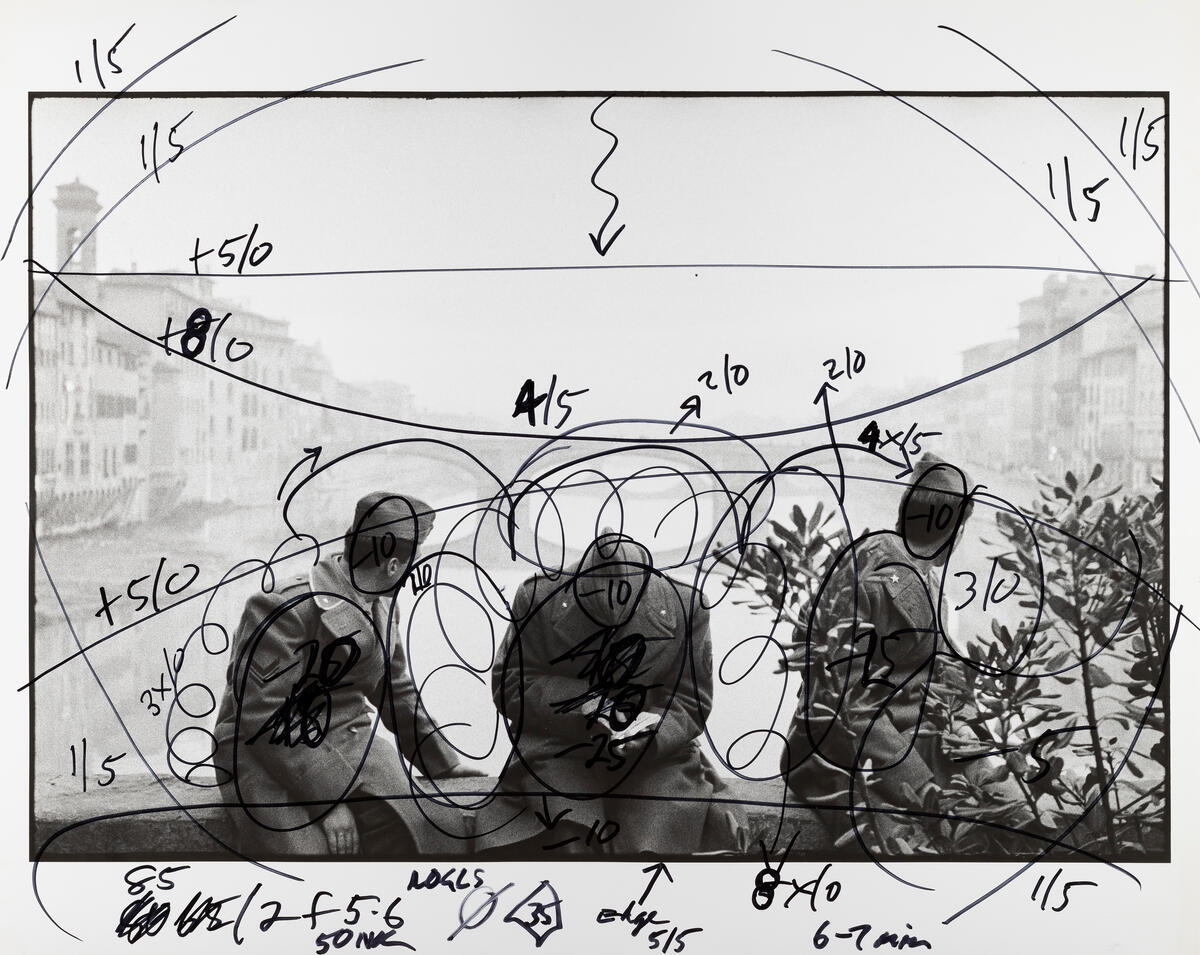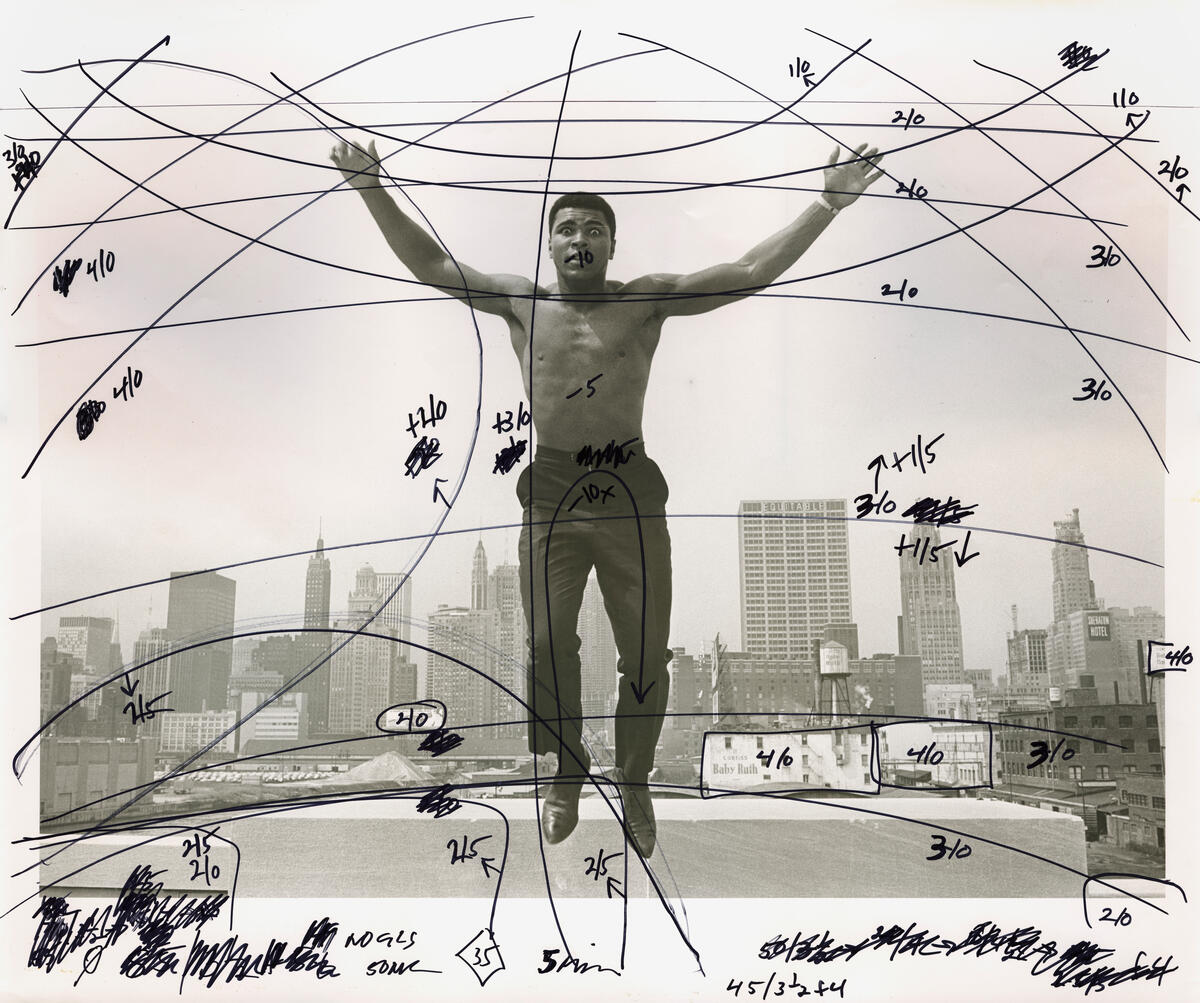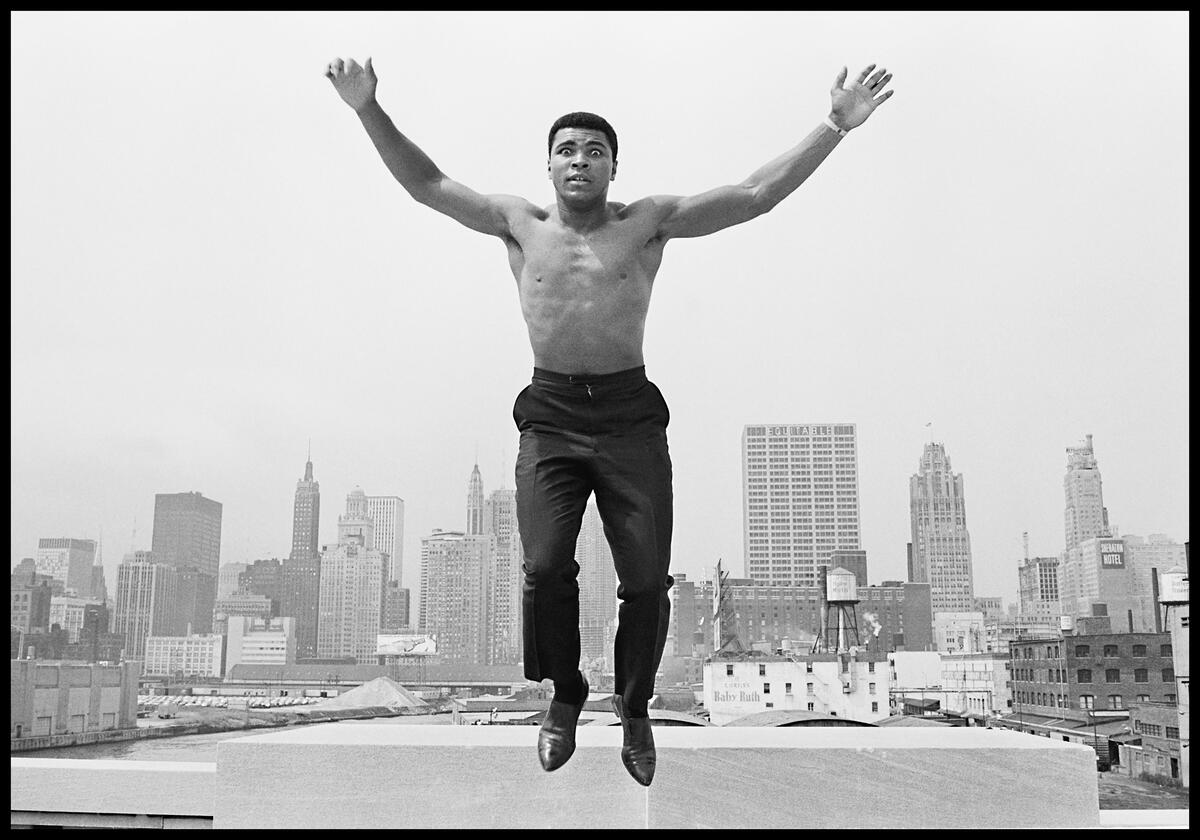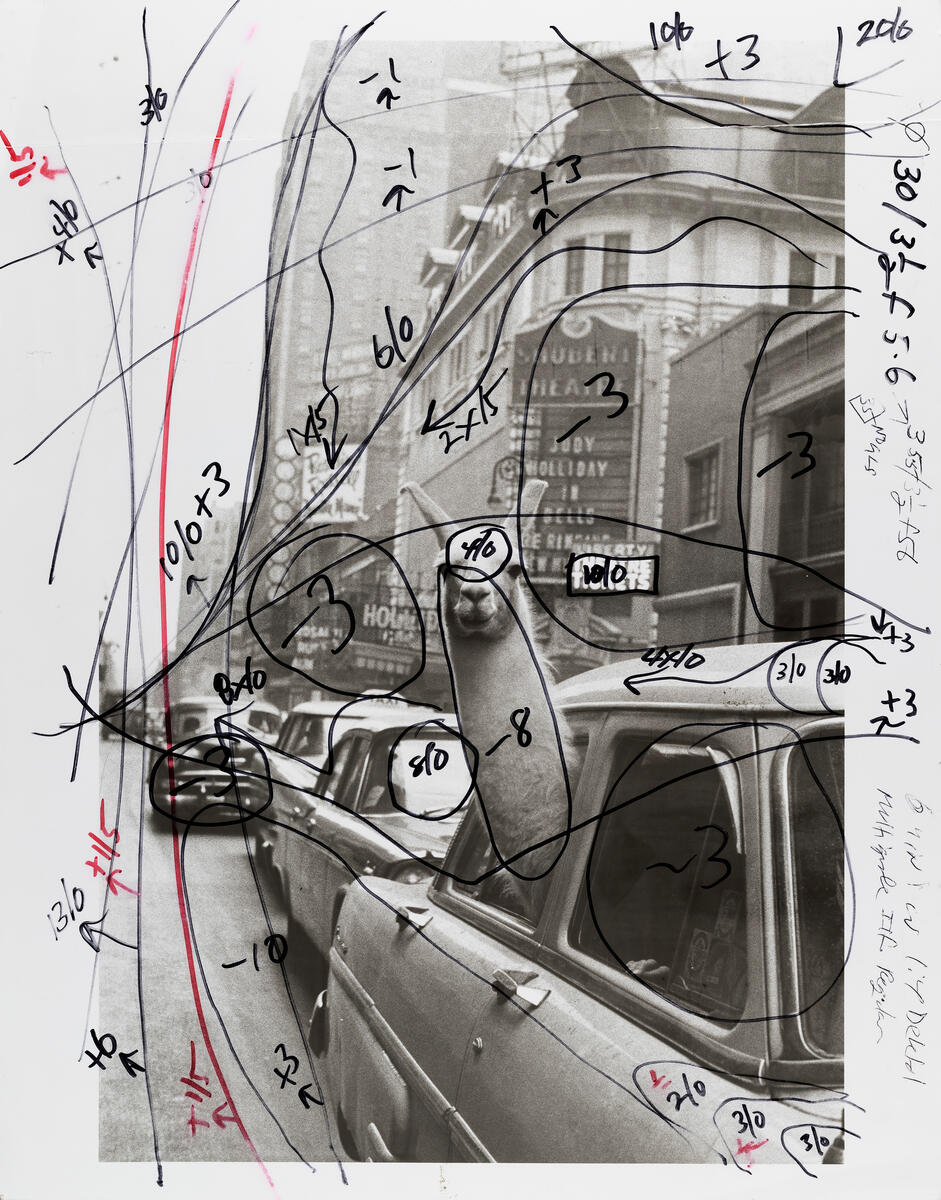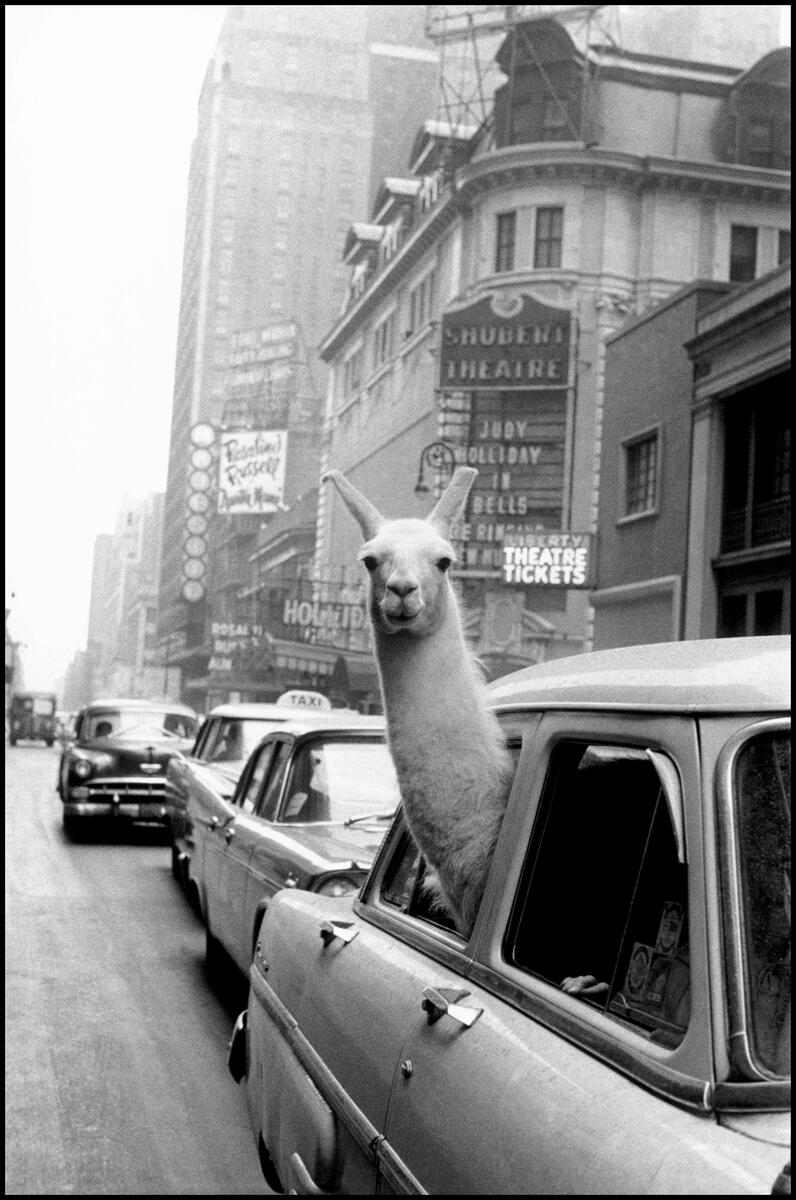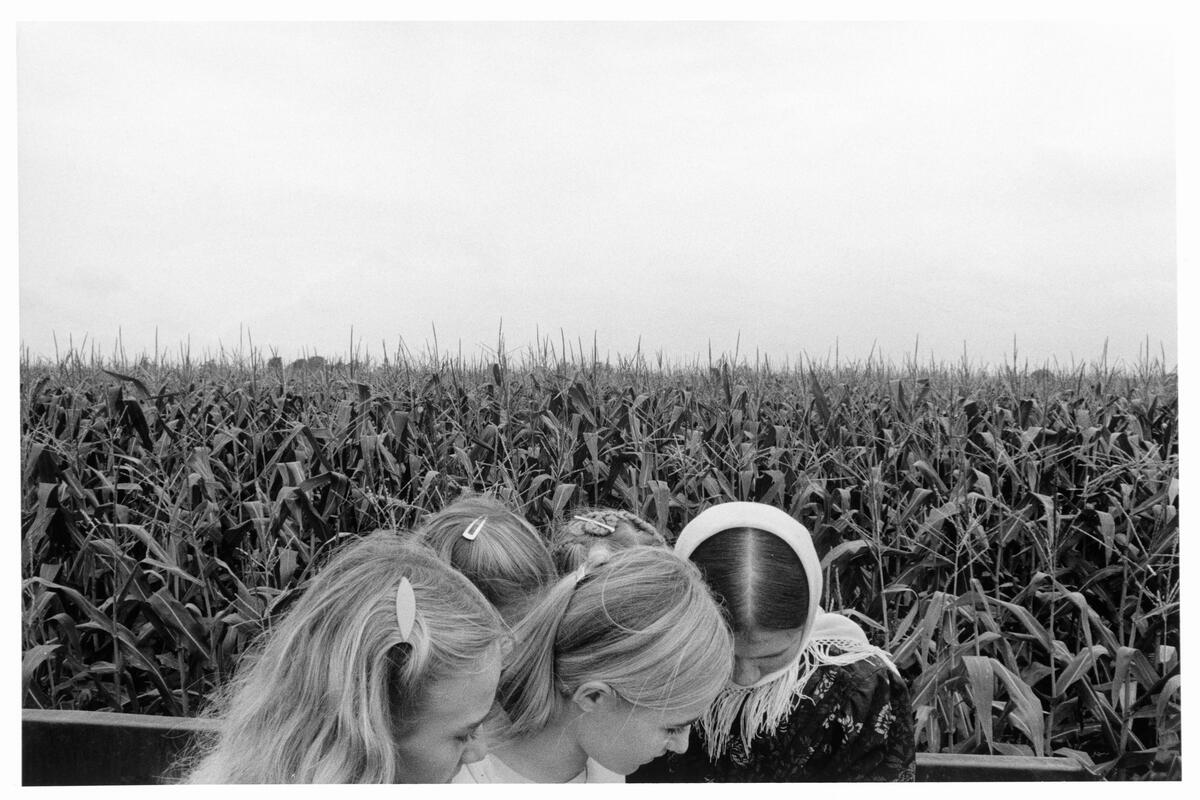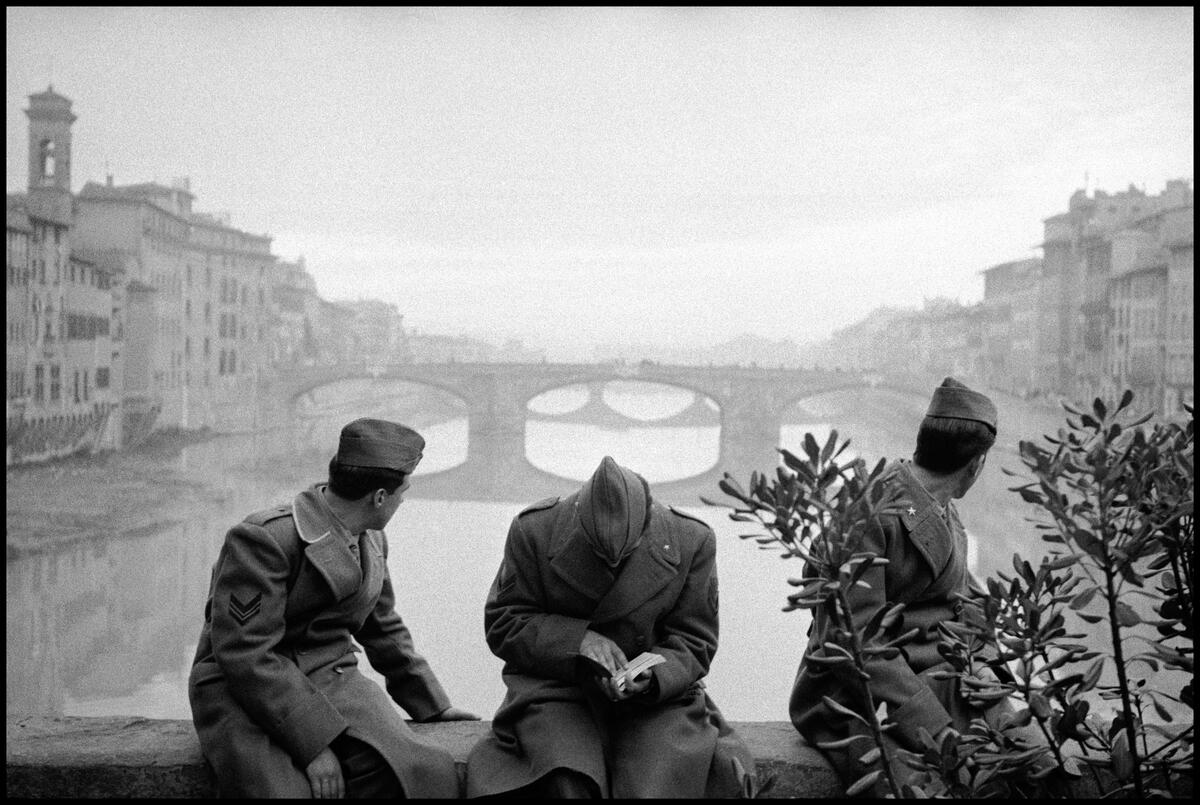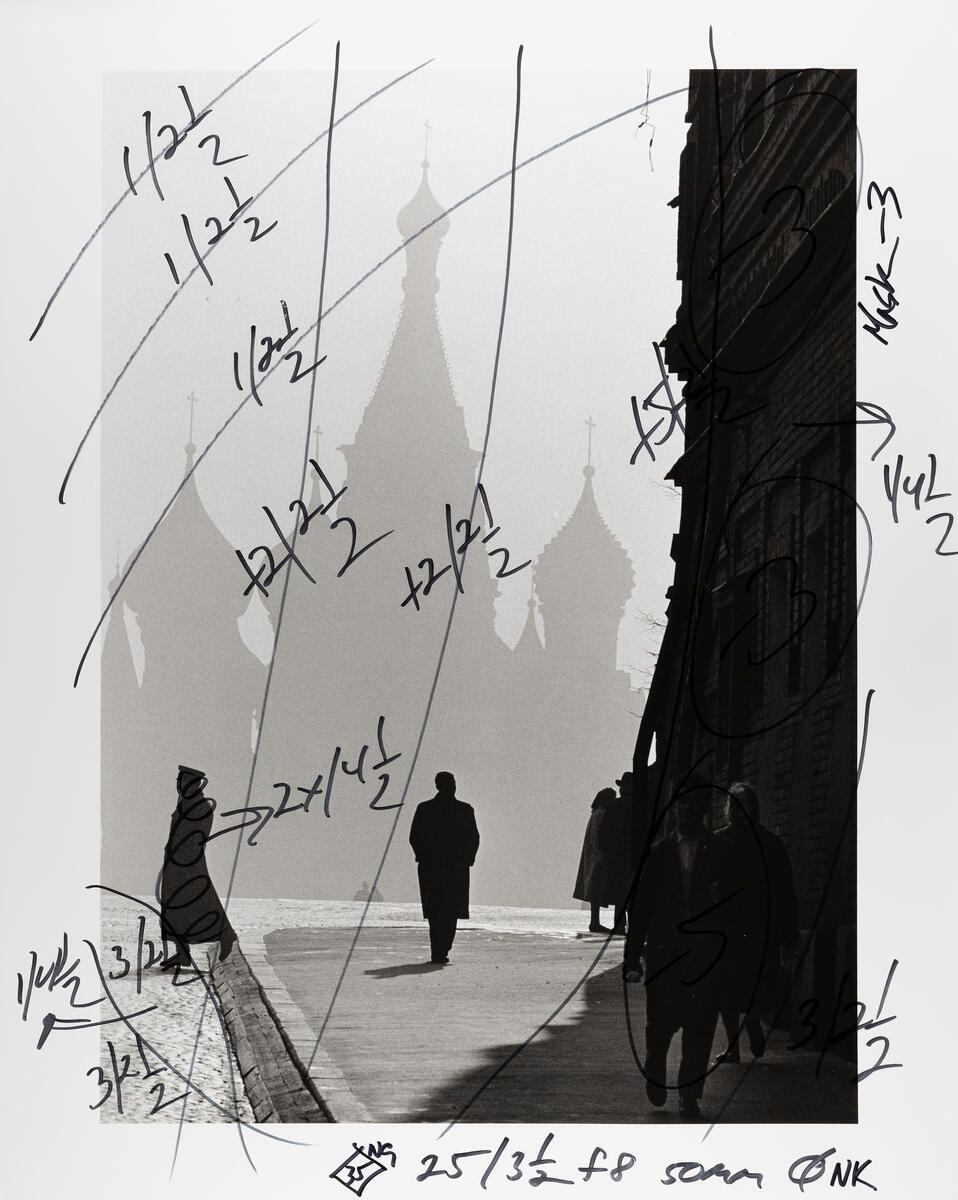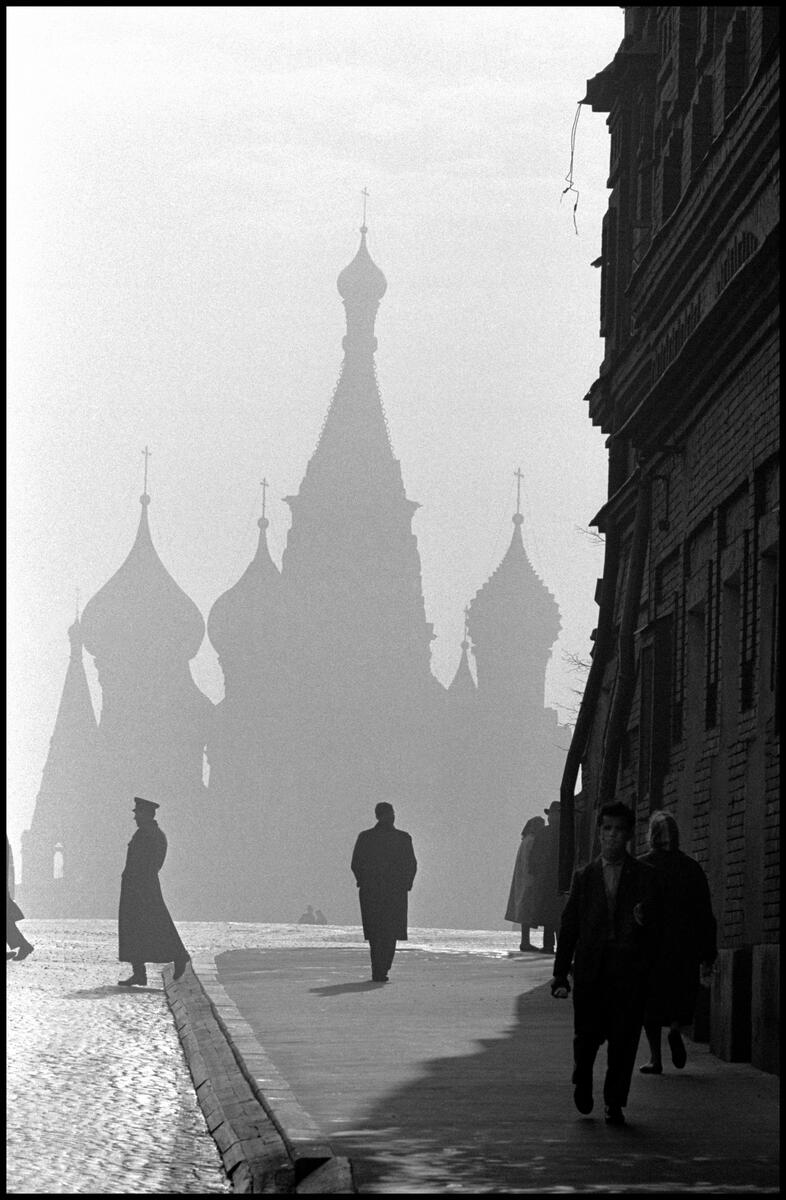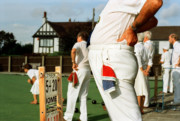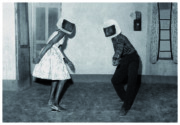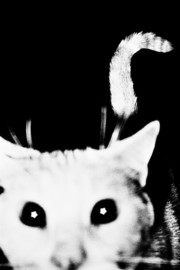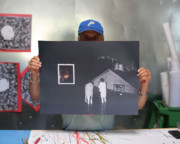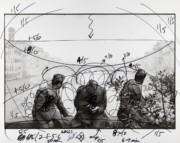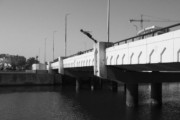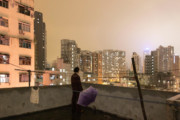Back to the Lab
Five new darkroom prints enter the collection, including images by Thomas Hoepker, Inge Morath, Leonard Freed, Burt Glinn, and Larry Towell, complete with markups and notations from master printer Pablo Inirio and Towell himself.
The Magnum Darkroom Collection expands to 20 with the most recent selection of 11”x14” prints. Through various markups and notations, the printers’ interpretations and overarching vision in bringing these remarkable subjects to life becomes clear — and all the more impressive. These prints grant unprecedented access to the thought process and craftsmanship behind the work of developing and elevating images caught on film by Magnum photographers.
Culture and history loom large in the five new images to be released as darkroom prints, available from August 8. Thomas Hoepker’s contribution captures Muhammad Ali mid-jump above Chicago’s skyline just months before “The Greatest” was stripped of his heavyweight title, passport and boxing license for his opposition to the catastrophic US war in Vietnam. From nearly a decade earlier, one of Inge Morath’s most recognizable images depicts a llama turned television star basking in the glitz and glam of New York’s Times Square from the backseat of a car. Larry Towell’s photograph portrays Mennonite children in front of a vast cornfield, where they stand in stark opposition to the enormity of modern technological society. Leonard Freed shows soldiers perched on Florence’s ancient Ponte Vecchio in the midst of Italy’s Economic Miracle. Burt Glinn’s photo foregrounds people beneath the unmistakable silhouette of St. Basil’s Cathedral in Moscow’s Red Square as tensions continued to rise during the Cold War.
In 1966, Thomas Hoepker and his second wife, journalist Eva Windmoeller, followed Muhammad Ali around Chicago as he prepared for an upcoming fight. The larger-than-life “Champ” retained the heavyweight title in five fights that year — notching three TKOs, one KO, and one unanimous decision. Hoepker’s portrait of the fighter jumping atop a bridge on the Chicago River was spontaneous rather than pre-planned, with Hoepker noting, “That just happened. We were crossing and they said, ‘Hey that’s a nice view!’ And he got out and jumped on that bridge and took off his shirt, that was just to show off, and then he jumped. Once, you know? He jumped once and that was it. Today you would bring a producer and crew, and he would jump 25 times.”
In her first assignment of 1957, Inge Morath captured Linda the llama riding home in the back of her trainer’s car. They were traveling from the ABC studio, along Broadway in New York City’s Times Square. Linda was one of several television animals featured in the article, which included three of Morath’s photographs. In addition to the llama, the one-page story for Life magazine’s December 2 issue, profiled birds, cats, dogs, a pig, a kangaroo, and even a miniature bull, all living at home with their trainers in a Manhattan brownstone.
Larry Towell first encountered the Mennonites in the fields close to his home in Ontario, Canada, and gained unique access to their lives, which were otherwise cut off from the rest of society and its technological advances. He documented life in their communities between 1990 and 1999, photographing a total of 23 Old Colony sects across rural Canada and Mexico. The Ontario Mennonite population was around 30,000 at the time. Towell’s book The Mennonites was originally published in 2000. Pictured here, a group of girls bow their heads in front of a Lambton County cornfield in 1990.
In 1958, Leonard Freed photographed three soldiers sitting above Florence’s Arno River on the ledge of the Ponte Vecchio. The very first documentation of the bridge was in the year 996, but it took its modern form around 1345. Despite being destroyed and rebuilt many times, the bridge stands as both the oldest in Florence and the only one in the city to survive World War II. This period of Italian history following the end of the Marshall Plan, known as the Economic Miracle, saw Italy transform from a poor, mostly rural nation into a global industrial power. Enormous changes in Italian society and culture from this time impacted the world over. Freed loved and photographed Italy for more than 50 years, with this photo first appearing in his book Leonard Freed: Photographs 1954-1990.
In 1959, American photographer Burt Glinn captured several notable moments of the Cold War, including Fidel Castro’s march on Havana and Nikita Khrushchev’s visit to the US. Two years later, in 1961, Glinn photographed the USSR — including Moscow’s Red Square. In this image, the silhouette of St. Basil’s Cathedral looms in the background while soldiers and civilians walk the streets. Captured by Glinn on its quadricentennial, the cathedral built by order of Ivan the Terrible, remains the oldest building on the square and one of Russia’s most recognizable.
View the full collection and shop the prints on the Magnum Shop.


